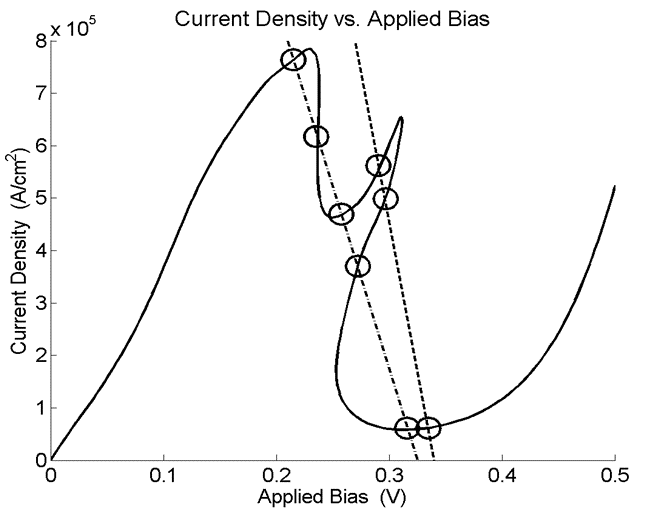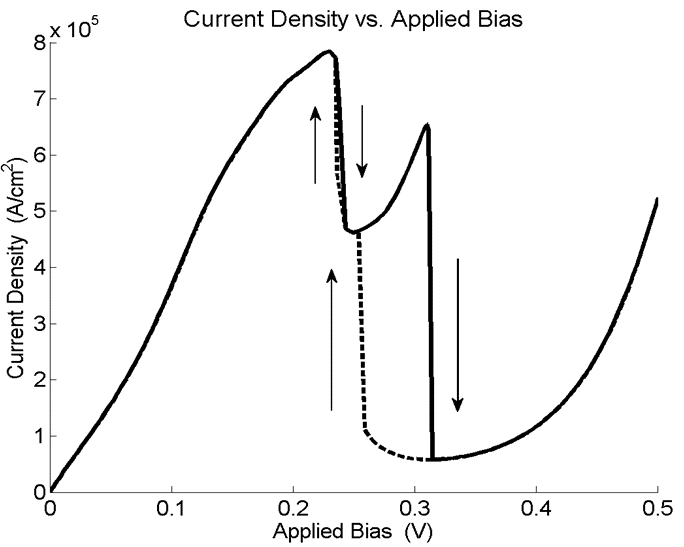Quantum Charge Transport in Nanoelectronic Devices
On length scales approaching and smaller than an electron's de Broglie wavelength, electronic motion is influenced at a very
basic level by both coherent interference effects as well as incoherent phenomena. It is in this regime, typically on the order of
nanometers, that the wave-like nature of electrons may be expressed. Further, this wave-like behavior may be exploited to realize
new functionality in semiconductor devices, thanks to both modern crystal growth techniques as well as electron beam lithography.
An early example of such a "quantum device" is the resonant tunneling diode (RTD) which, like the Esaki diode before it, exhibits
a region of negative differential resistance (NDR) with applied bias.
Intrinsic Tristability in RTDs:
Intrinsic Tristability in RTDs:
Current-voltage measurements of a certain class of RTDs reflect both 1) an apparent bistability, associated with an abrupt
(discontinuous) transition between high and low current states with infinitesimal change in applied voltage, and 2) a hysteresis
effect, in which the threshold voltage(s) for transitions between these states depends on the direction (forward or reverse) of the
voltage slewing. Such RTDs are ideal candidates for high-speed digital logic and memory applications. Recent calculations in
the Yoder group based on non-equilibrium quantum statistical mechanics demonstrate unambiguously that current in such RTDs
is intrinsically a continuous but multi-valued function of voltage, and that experimental measurement of bistability is in reality the
fingerprint of a more complex, intrinsically tristable underlying structure. Furthermore, this analysis shows that the experimentally
observed hysteresis derives from interactions between the RTD and its external circuit, which together define which stationary
states of the RTD itself are exponentially stable in the context of the measurement.

|

|
|
Numerical simulations reveal that certain RTDs possess a
continuous but multi-valued
current-voltage relationship, resulting in an intrinsic
tristability.
A qualitatively different form of multistability may also
be observed, depending on details of the external circuit.
|
Experimentally observed bistability and hysteresis
are both consequences of interactions between an intrinsically
tristable RTD and its external measurement circuit, as
this figure, derived from calculations, indicates.
|


